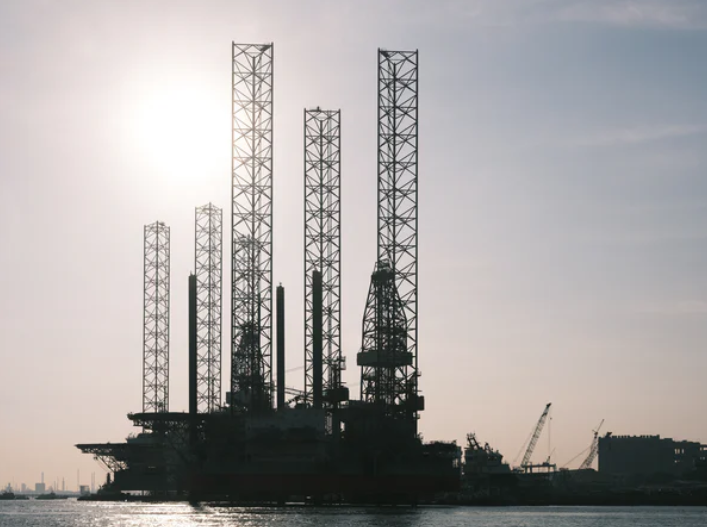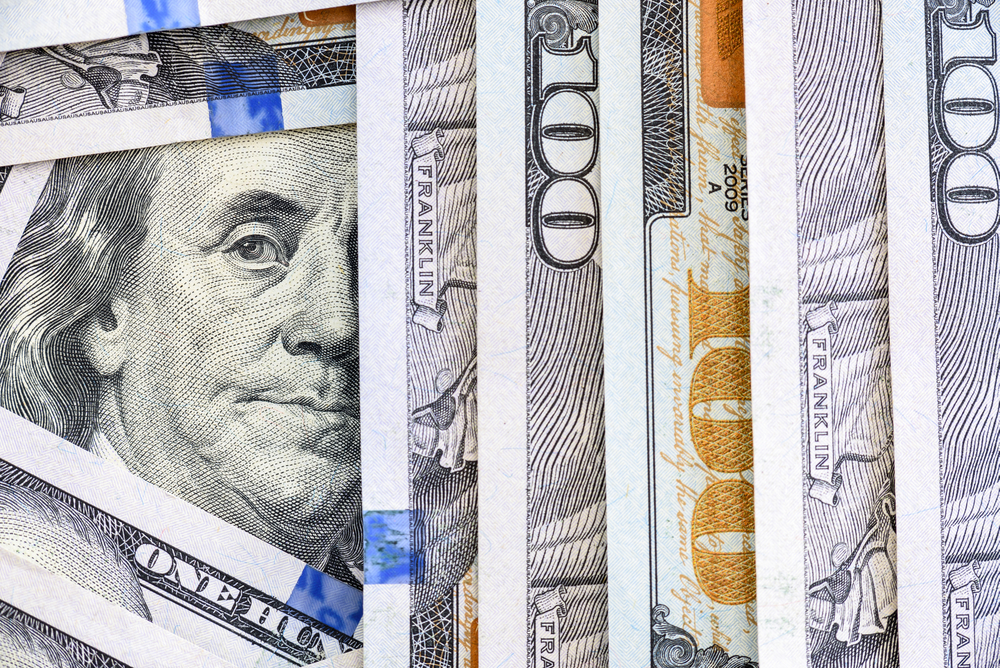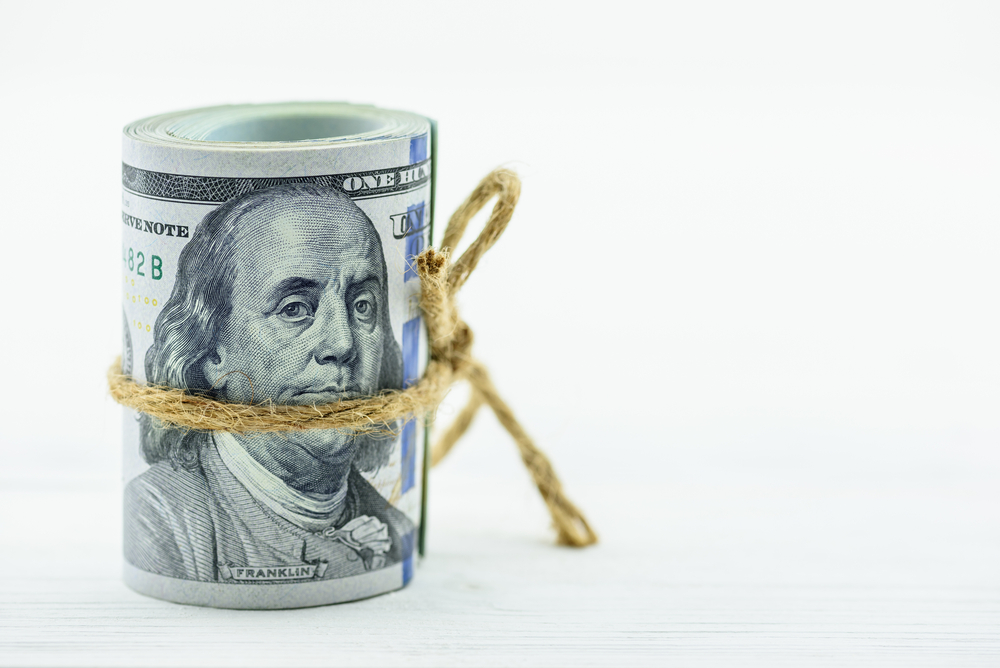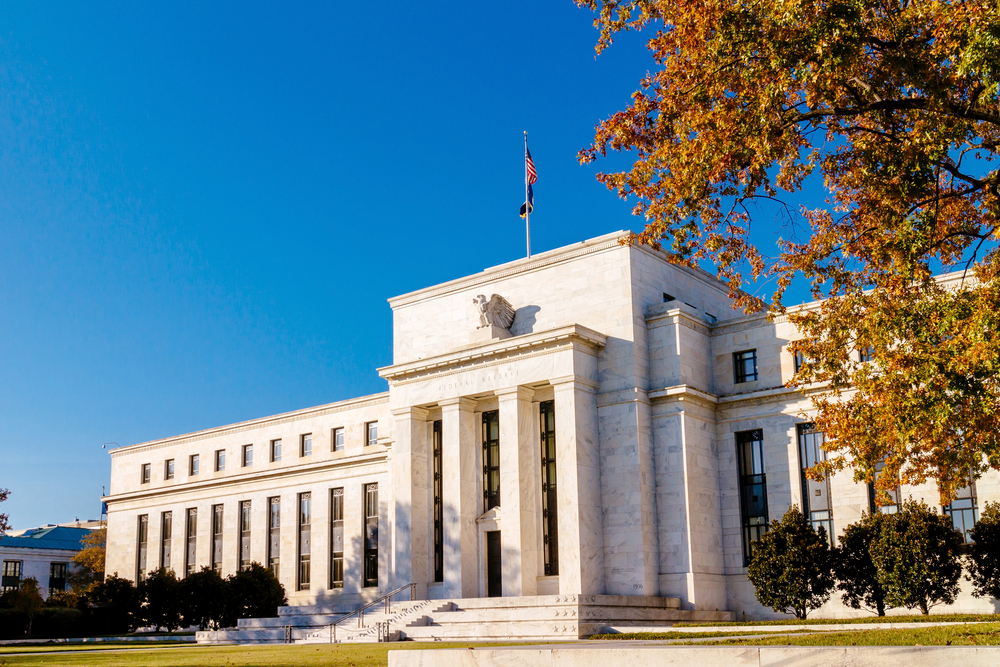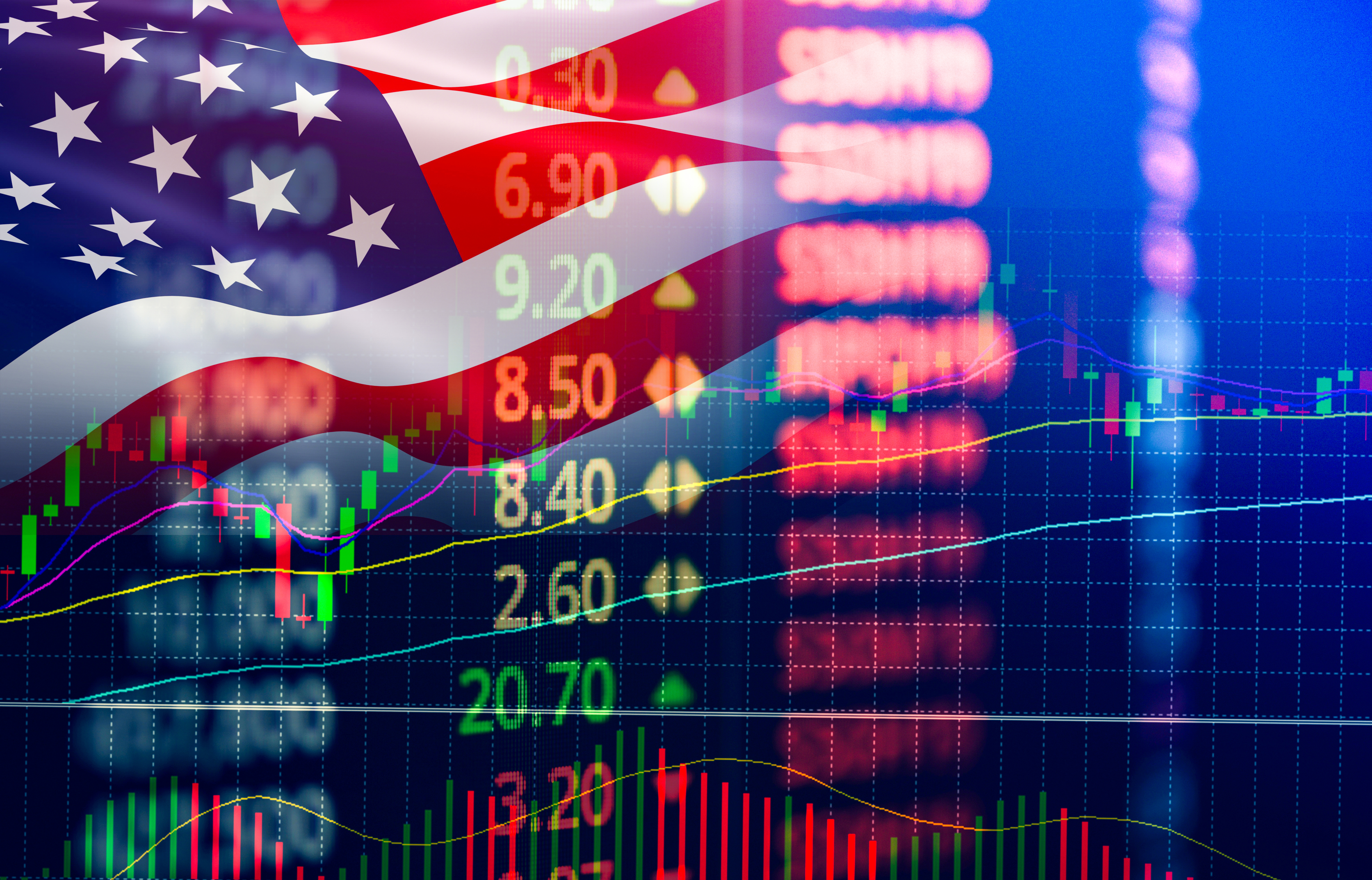Oil Market Still Positive
Although investor risk appetite in global markets showed a mixed outlook, signs that the US economy is continuing to recover from Coronavirus outbreak and talks to revive the Iran nuclear deal have reflected positively on the oil market.
In the new week, Brent oil recovered 4.53 from its 7.81 percent loss and Crude recovered 4.95 percent from its 8.20 percent loss.
Developed and emerging economies have been battling the Coronavirus outbreak since last year. Coronavirus, which increases the size of concern along with new variants, continues to harm human health, while also delaying the recovery of economies. Advanced economies that guide global markets provide record levels of financial support to reduce the effects of the pandemic on the economy, while central banks continue to provide the necessary support with ultra-loose monetary policies.
The United States, which has not fallen off the agenda, especially on monetary and financial support, has announced a $ 5 trillion financial support package since last year, along with the old and new administration, while Democratic President Joe Biden's team has prepared a $ 1.7 trillion infrastructure and employment package, which is a continuation of $ 1.9 trillion financial package. Federal Reserve Bank, on the other hand, has contributed to the recovery of the oil market by maintaining its stable attitude to maintaining ultra-loose monetary policy, despite inflation concerns.
Although daily cases are getting lower and lower in Europe, Asian countries continue to raise demand concerns in the oil market by announcing record levels of daily cases. However, while this concern has led to some pressure on the oil market, signs that developed and emerging economies are continuing to catch up with pre-pandemic levels are keeping the oil market resilient.
In addition to these developments, another element affecting the oil market was the Iranian nuclear treaty.
There was tension between Iran and the P5+1 countries (China, France, Russia, Britain, the United States and Germany) after former US President Donald Trump left the agreement, which was signed in 2015 and included the United States. Joe Biden, who took office in January 2021, decided to return to the nuclear deal.
Last week, Iranian President Hassan Rouhani stated that the US and European countries have no other way than lifting the sanctions and returning to the nuclear deal, "The problems related to the lifting of the main sanctions are almost solved. Negotiations on some details are ongoing," he noted.
Brent oil, which is looking to recover its losses after Rouhani's comments, rose 4.53 percent and crude recovered 4.95 percent.
Iranian parliament speaker Mohammad Baqir Galibaf stated that the three-month inspection agreement between Iran and the UN's International Atomic Energy Agency (IAEA) has expired and the agency will cease to access images inside some of Iran's nuclear facilities. Making a statement again on the first trading day of the week, he announced that they decided to extend the monitoring agreement signed with the International Atomic Energy Agency for another month.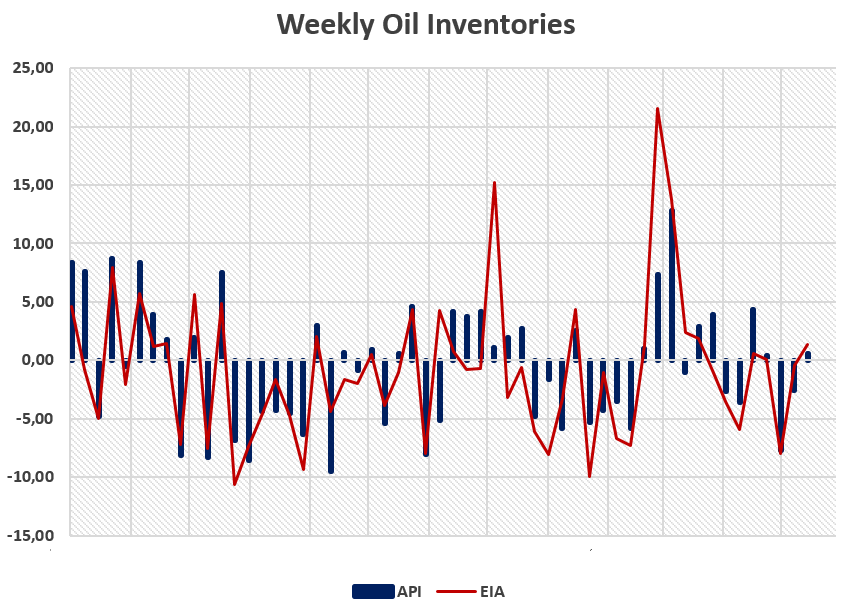
In addition to the above developments, developed and emerging economies almost mobilized against the coronavirus by applying essential restraint measures last year. Daily coronavirus case numbers after mandatory lockdowns limited the rises, allowing daily case numbers to decrease. The gradual normalization of these cases over the past year led the U.S. Petroleum Institute (API) and the Energy Information Administration (EIA) to reduce crude oil inventories. The decrease in oil inventories, which had been continuous until September 2020, reflected positively on the oil market. In addition, the Organization of Petroleum Exporting Countries (OPEC) announced a decision to reduce oil production along with the pandemic was another reason that affected the decline in oil inventories.
On the other hand, after daily coronavirus cases increased again after the summer, the outbreak again raised concerns about demand in the oil market, leading to an increase in oil inventories. Although oil inventories were noticeably volatile due to the effects of the pandemic, the continued vaccination campaign to gain social immunity on a global scale led to the decline of oil inventories. This decrease in oil inventories reflected positively on crude oil prices, supporting its progress to pre-pandemic levels.
After these developments, OPEC announced its decision at its meeting in recent months to gradually reduce oil production cuts from May, while oil stocks began to increase as of May 4. Although this increase had a negative impact on oil prices, signals that the US economy continues to recover, lifting restrictions due to the decrease in daily coronavirus cases globally and revitalization of the Iran nuclear deal are positively reflected in the oil prices. 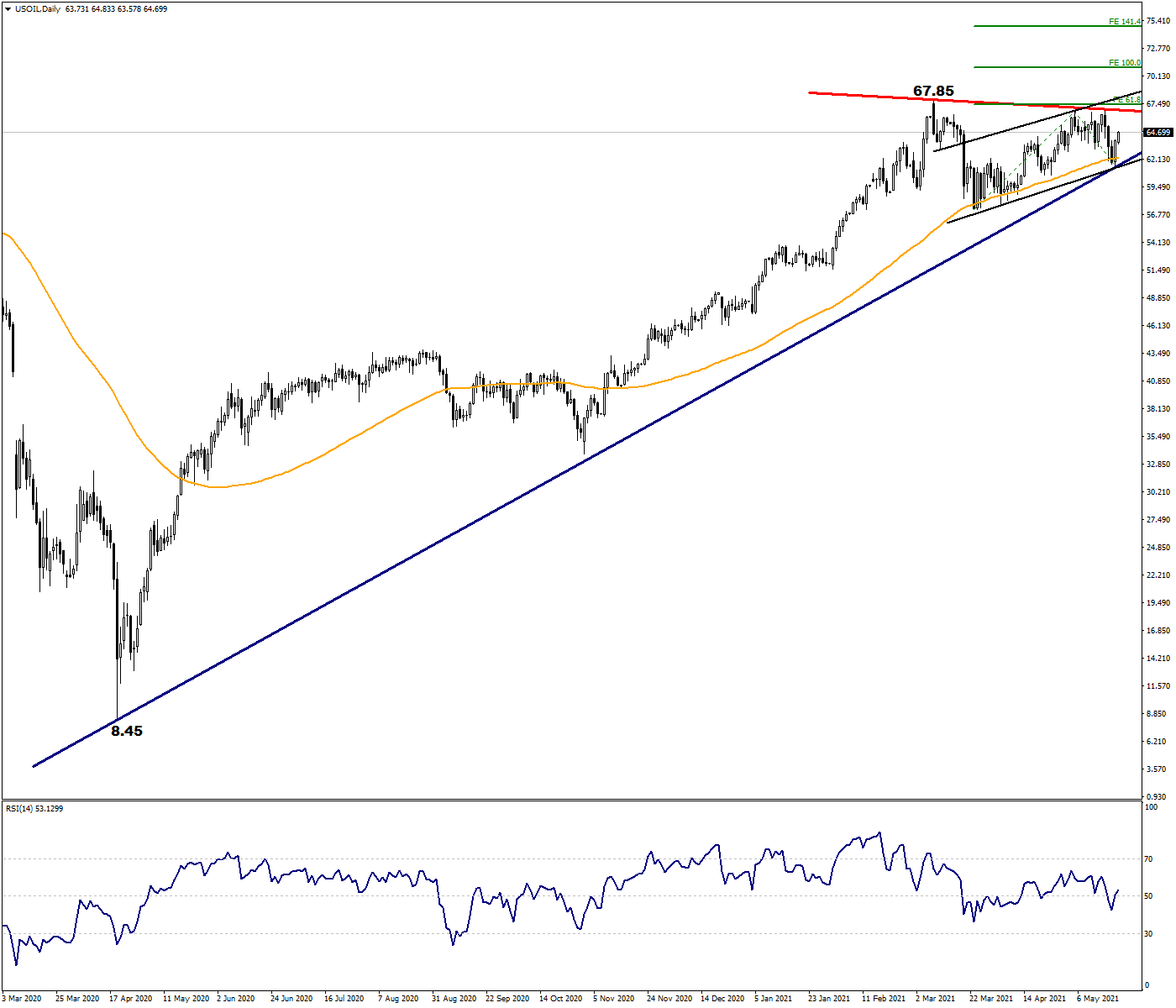
Technically, crude oil, which is stuck between 67.85 and 57.65 levels, is trying to catch an upward momentum. If it becomes permanent above the 100-period WMA, it will possibly follow 67.30 indicated by Fibonacci 61.8 expansion line above 66.0. In this case, the descending trend will also end and we will follow 68.50 and 69.80 resistance levels. Unless 63.20, 62.00 and the major trendline are broken, we do not expect any downward movements. But in this possible scenario, 60.40 and 58.70 can be followed.
Support: 63.20 – 62.00 – 60.40 – 58.70
Resistance: 66.00 – 67.30 – 68.50 – 69.80

